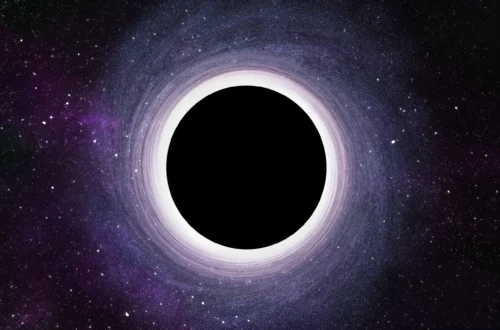I’ve always been that guy who drags friends out to dark fields on clear nights, pointing at the stars and wondering if someone’s looking back. A few years ago, during a road trip through the deserts of New Mexico, I stopped at a remote spot and lay on the car hood, staring at the Milky Way. The sheer vastness hit me: How many worlds out there could harbor life? It’s a question that’s haunted humans for ages, blending science with a touch of hope. Today, with telescopes like JWST peering deeper than ever, we’re closer to answers. This guide breaks down the estimates, from our galaxy to the entire universe, using the latest 2025 data. We’ll explore what makes a planet livable, crunch numbers, and even share ways you can join the hunt. Buckle up—it’s a wild ride through the cosmos.
What Makes a Planet Habitable?
Habitability isn’t just about being “Earth-like”; it’s a mix of factors letting life thrive, from microbes to complex beings. Scientists define it loosely: a world with liquid water, stable climate, and energy sources. But pinning down exact counts is tricky, as we’re extrapolating from limited observations.
The Goldilocks Zone: Not Too Hot, Not Too Cold
This is the orbital sweet spot where temperatures allow liquid water—key for life as we know it. For sun-like stars, it’s roughly Earth’s distance; red dwarfs have tighter zones. Recent studies show zones can shift with atmospheres, widening possibilities.
Rocky Worlds vs. Gas Giants
Life needs solid ground, so rocky planets like Earth or Mars are prime. Gas giants like Jupiter? Probably not, though their moons (think Europa) could hide oceans. Size matters—too big, gravity crushes; too small, atmospheres escape.
Atmosphere, Water, and Shields
A protective atmosphere blocks radiation while trapping heat. Magnetic fields fend off solar winds stripping air. Water’s essential, but delivery via comets or internal sources varies. It’s like a planetary recipe—miss one ingredient, and life flops.
Known Potentially Habitable Exoplanets
As of mid-2025, we’ve confirmed nearly 6,000 exoplanets, but only a handful scream “habitable.” NASA’s catalog lists about 70 candidates with right sizes and orbits. I remember the buzz when TRAPPIST-1’s worlds were announced—felt like finding new neighbors.
Top Candidates Close to Home
Proxima Centauri b, just 4 light-years away, orbits a red dwarf in the habitable zone—rocky, Earth-sized, but flares might sterilize it. Gliese 12b, discovered in 2024, is slightly smaller than Earth, potentially temperate. These tease us with “what ifs.”
Distant Gems: Kepler and TESS Finds
Kepler-452b, dubbed Earth’s cousin, is 60% larger with a sun-like star—possibly watery. TESS’s TOI-700 d is Earth-sized in a stable zone. JWST’s 2025 scans of K2-18b hinted at oceans, stirring excitement despite its size.
Moons as Hidden Havens
Don’t forget exomoons—Europa-like satellites around gas giants. None confirmed yet, but models suggest billions in habitable zones. Imagine life under icy shells, fed by tidal heat.
Here’s a table of notable habitable candidates:
| Planet Name | Distance (Light-Years) | Size (Earth=1) | Star Type | Key Feature |
|---|---|---|---|---|
| Proxima b | 4 | 1.3 | Red Dwarf | Closest potential world |
| TRAPPIST-1 e | 40 | 0.9 | Red Dwarf | In multi-planet system |
| Kepler-452b | 1,800 | 1.6 | Sun-like | Older, possibly watery |
| K2-18b | 120 | 2.6 | Red Dwarf | Water vapor detected |
| Gliese 12b | 40 | 0.9 | Red Dwarf | Recent 2024 find |
- Pros of These Worlds: Earth-like traits boost habitability odds.
- Cons: Radiation, tidal locking could make surfaces hostile.
Comparing red dwarf vs. sun-like systems: Red dwarfs host more planets but flare often; sun-likes are stable but rarer.
Estimates of Habitable Planets in the Milky Way
Our galaxy’s a bustling place with 100-400 billion stars. NASA’s Kepler data suggests 40 billion Earth-sized planets in habitable zones, but rocky, temperate ones? Around 300 million, per 2020 studies updated in 2025.
Insights from Kepler and TESS Missions
Kepler spotted thousands, estimating one in five sun-like stars has a rocky world in the zone—billions overall. TESS, ongoing in 2025, refines this with brighter stars, confirming dozens more candidates.
JWST’s 2025 Contributions
JWST’s infrared eyes probed atmospheres, finding water vapor on several—like K2-18b. No biosignatures yet, but it narrowed habitability for 25+ worlds, suggesting 500 million viable in the galaxy.
Dwarf Stars: The Majority Players
Red dwarfs, 70% of stars, could host billions of habitable planets despite flares. Models show thick atmospheres mitigate risks, upping counts to 100 billion total potentials.
Bullet points on Milky Way estimates:
- Conservative: 300 million rocky, habitable zone planets.
- Optimistic: Up to 40 billion if including red dwarf worlds.
- Average: One habitable planet per 1,000 stars.
Scaling Up: Habitable Planets in the Entire Universe
With 2 trillion galaxies, each averaging 100 billion stars, the universe teems with possibilities. Extrapolating Milky Way data, estimates hit 50 sextillion (5 x 10^22) habitable planets—a number so huge it’s comical, like stacking Earths to the moon and back quadrillions of times.
The Cosmic Web: Galaxies and Their Variety
Spirals like ours favor habitability with metal-rich stars; ellipticals, less so. Voids and clusters affect counts, but overall, if 1% of planets are habitable, we’re talking quintillions.
Average Planets per Galaxy
Assuming similar to Milky Way—300 million habitable per galaxy—multiplied by 2 trillion equals 6 x 10^20. JWST’s deep fields in 2025 boosted galaxy counts, refining this upward.
Beyond Observables: The Infinite Universe?
The observable universe is 93 billion light-years across, but infinity suggests endless worlds. Emotional kicker: We might never know, but the math screams we’re not alone.
Pros and cons of universe-scale estimates:
- Pros: Inspires exploration, vast potential for life.
- Cons: Relies on assumptions; untestable beyond our bubble.
Comparison: Milky Way vs. Universe
- Milky Way: 300 million to 40 billion—local neighborhood.
- Universe: Sextillions—overwhelming scale, but diluted by distance.
The Drake Equation: From Habitability to Intelligent Life
Frank Drake’s 1961 formula estimates communicating civilizations, but tweak it for habitable planets: Focus on star formation, planet fraction, habitable per system. Updated 2025 values suggest billions in the galaxy, trillions universe-wide.
Breaking Down the Factors
Star formation rate: 1-3 per year. Planets per star: Nearly 1. Habitable fraction: 0.2 for sun-likes. Life emergence: Unknown, but optimistic models yield high numbers.
2025 Updates and Refinements
Recent revisions add continents, oceans—rare traits boosting complex life odds. Still, for basic habitability, equation points to abundance.
Implications for SETI and Us
If habitable worlds abound, why no contact? Fermi paradox looms, but perhaps life’s rare beyond basics. It tugs at the heart—hopeful yet lonely.
Challenges and Uncertainties in Counting Habitable Planets
Estimates aren’t set in stone; biases abound. We detect big planets easier, missing Earth-twins. Dust, distance obscure views. Humorously, it’s like counting jellybeans in a jar—from space.
Detection Biases and Tech Limits
Transit methods favor close-orbit giants; direct imaging’s nascent. JWST helps, but we’ve sampled tiny fractions.
Evolving Definitions of Habitability
Subsurface oceans, rogue planets challenge norms. 2025 studies on Venus-like worlds expanded criteria.
The Role of Extremophiles on Earth
Life thrives in Earth’s extremes—deep seas, acids—suggesting broader habitability. If microbes endure, counts skyrocket.
Tools and Missions for Hunting Habitable Worlds
You can chase these worlds from home. I started with a basic telescope, spotting Jupiter’s moons—thrilling prelude to exoplanets.
Top Telescopes and Apps for Amateurs
Celestron NexStar 8SE ($1,200) offers app-guided views; cheaper Orion StarBlast ($200) for starters. Apps like SkySafari plot exoplanet host stars.
Where to Learn More: Navigational Resources
Visit planetariums or sites like exoplanet.eu. Join citizen science via Zooniverse—analyze TESS data.
Future Missions: What’s Next
Habitable Worlds Observatory (2030s) will spectrum 25+ worlds. Transactional: Buy from opticsplanet.com or amazon.com for deals.
Pros and cons of home observing:
- Pros: Affordable entry, builds connection.
- Cons: Can’t see exoplanets directly; needs dark skies.
Comparison: Ground vs. Space Telescopes
- Ground: Cheaper, but atmosphere blurs.
- Space (JWST): Crisp, but pro-only.
External link: NASA’s exoplanet hub at exoplanets.nasa.gov for catalogs.
Internal link: See our table above for candidates.
People Also Ask: Common Queries on Habitable Planets
From Google trends:
- How many habitable planets are in the Milky Way? Estimates range from 300 million to 40 billion, based on Kepler and JWST data.
- What is the closest potentially habitable planet? Proxima Centauri b, 4 light-years away, though its habitability is debated.
- How many exoplanets could support life? About 70 known candidates, but billions projected galaxy-wide.
- Is there life on other planets in 2025? No confirmed, but biosignature hunts continue with JWST.
- How do we find habitable exoplanets? Via transits, radial velocity, and atmospheric scans.
FAQ: Answering Your Cosmic Questions
What defines a habitable planet?
One with liquid water potential, stable temps, and protective features—often in the Goldilocks zone.
How many habitable planets are confirmed?
Around 70 candidates, none fully proven livable yet.
Where can I buy a telescope for exoplanet viewing?
Sites like celestron.com; try the Sky-Watcher EvoStar ($300) for beginners.
Could moons support life?
Yes, like Europa—subsurface oceans make them promising.
Why haven’t we found life yet?
Distances, tech limits, and life’s rarity beyond basics.





